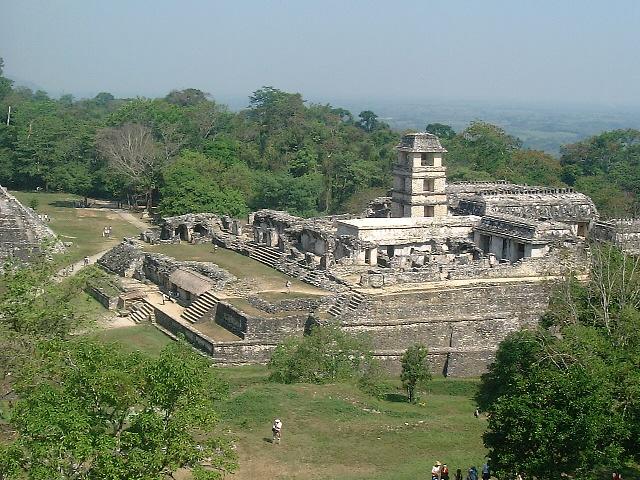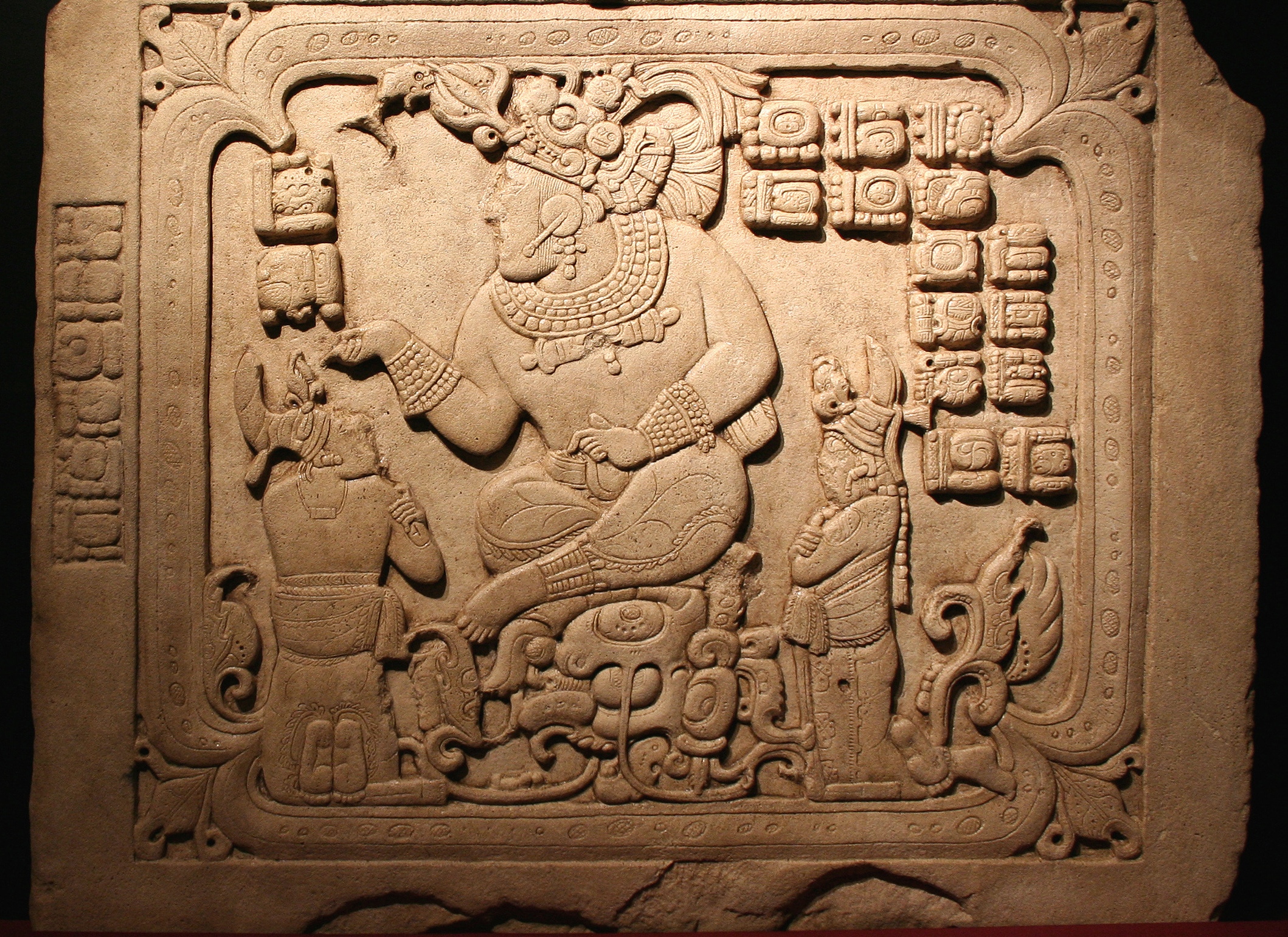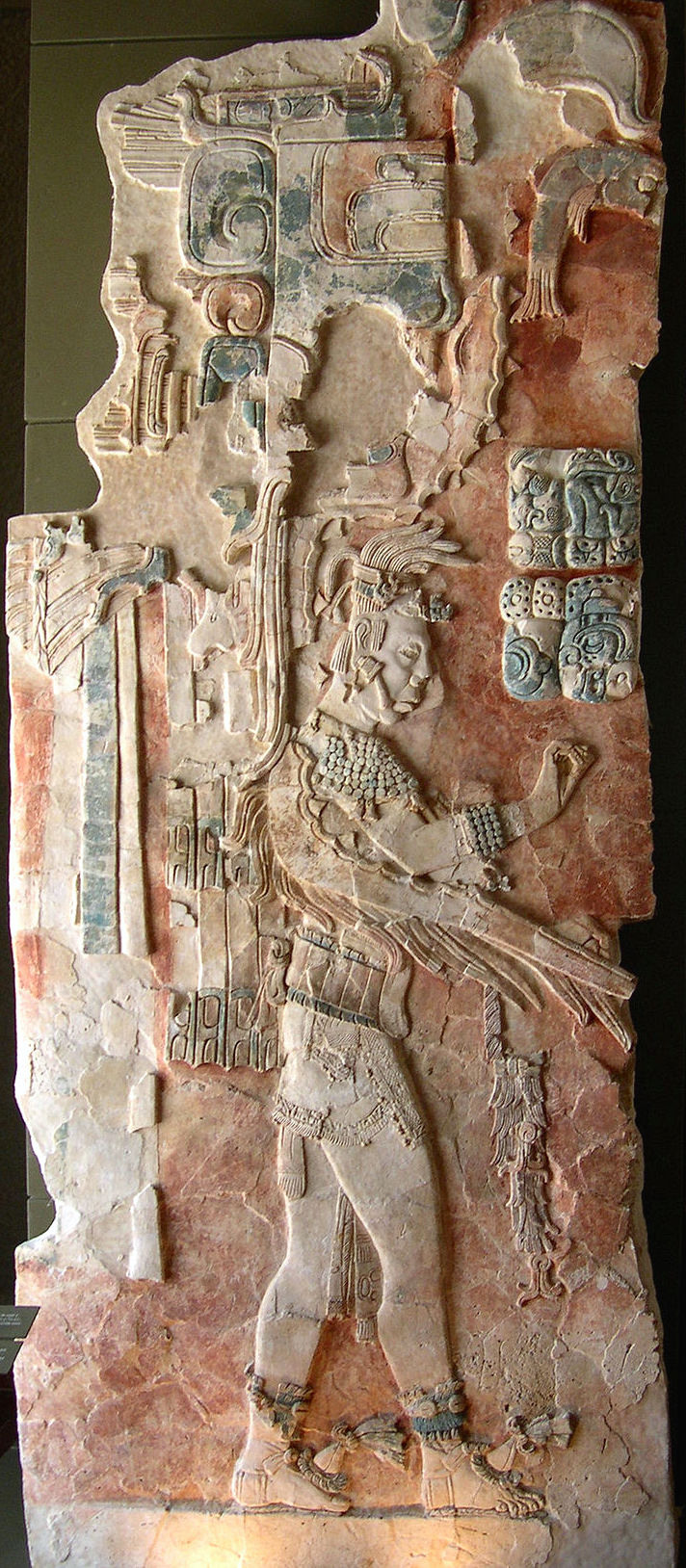 The ruins of Palenque.
The ruins of Palenque.The customs maintained are a result of the unification of pre-Columbian and post-Conquest philosophies-structured by the almost total adoption of Roman Catholicism.
According to "accepted history" the first “Maya” settlements were established in around 1800 BC in the Soconusco region of the Pacific Coast. This point in time, known as the Early Preclassic, was characterized by sedentary communities and the introduction of pottery and fired clay figurines.
Panel from Cancuén portraying the ruler T’ah 'ak' Cha’an.

During the Classic period, the most monumental of creations took life in the form of stepped pyramids. The Mayan's built pyramids in their religious centers and the accompanying palaces of their rulers. The palace at Cancuen is the largest in the Maya area, though the site lacks pyramids.
The Collapse of Mayan Civilization
The end of the Mayan civilization is arguably one of the most researched collapses in archaeological history. During the 8th and 9th centuries, the surrounding areas were abandoned due to over population, drought, disease, and war.
Ecological hypotheses include environmental disaster, epidemic disease, and climate change. There is evidence that the Maya population surpassed carrying capacity of the environment including exhaustion of agricultural potential and overhunting of megafauna.[3] Some scholars have recently theorized that an intense 200 year drought led to the collapse of Maya civilization.[4] The drought theory originated from research performed by physical scientists studying lake beds,[5] ancient pollen, and other data, not from the archaeological community.
Related Articles
BradONeill shares his incredible experience in Peru, where romance blossomed in an ancient civilization.
When I heard about the program I was kind of skeptical of my chances. I had never been to Peru. But the grant specifically called for a professor of Archeology willing to teach a course in Ancient Incan construction and then it culminated in a month long work program where the professor and students would act as tour guides and have access for academic study to all parts of the glorious city. More about Machu Picchu
Athena presents Exploring the Wonders of the Maya Route posted at trifter, saying, "Stretching from Southern Mexico into Belize and Guatemala, the Maya Route is a region where you can scale jungle-entwined temples by day, then dress up for a sparkling night on the town in seaside resorts or charming cities."
A stucco relief from Palenque depicting Upakal K'inich.


Jade Mayan Mask

A Middle Preclassic palace structure at Nakbé, the Mirador Basin.
Tulum

HDR. Gauss on a bit. Comes across as one of those old colored BW postcards. by joiseyshowaa
Pyramid of Kukulcan

Mayan House


The first published account of this lost city was in 1567, from a Spaniard, Father Pedro Lorenzo de la Nada.Exploring near the Usumacinta River, located in the modern Mexican state of Chiapas, Lorenzo came upon its stone temples and plazas, originally decorated with blue- and red-painted stucco but by then long abandoned by the Maya who built it. Lorenzo gave the grand structure the name Palenque, a Spanish word meaning "fortification." Read More
By Kelly Hearn
- Take a Mayan Tour
- Foundation for the Advancement of Mesoamerican Studies, Inc (FAMSI)
- Mayan Math and astronomy
- Mayan Civilization in Xcaret
- Mayaweb (Dutch and English)
- Guatemala, Cradle of The Maya Civilization
- Web page of the Maya Esteem Project centered on Maya sites in Chilon, Chiapas, Mexico.
- Web page of the Maya Blue Pigment
- Maya Tools, Weapons & Artifacts
- Courtly Art of the Ancient Maya at the National Gallery of Art
References
- Drew (2004), p.6.
- Coe, Michael D. (2002). The Maya (6th ed.). Thames & Hudson. pp. 47.
- University of Florida study: Maya politics likely played role in ancient large-game decline, Nov. 2007
- Gill, R. (2000). The Great Maya Droughts. Albuquerque: University of New Mexico Press. ISBN 0826321941.
- Hodell, David A.; Curtis, Jason H.; Brenner, Mark (1995). "Possible role of climate in the collapse of Classic Maya civilization". Nature 375 (6530): 391–394. doi:.







0 Comments:
Post a Comment
We appreciate comments, but we delete SPAM.